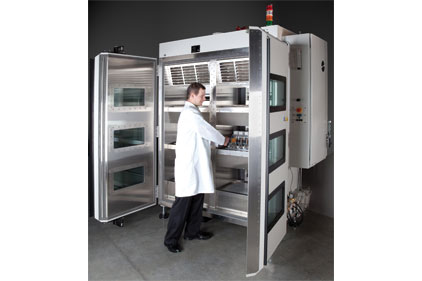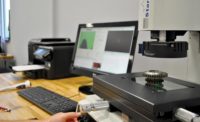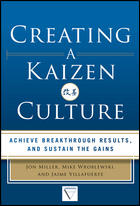Case Study
Companies Save Millions By Reducing Warranty Return Rates by 50% or More
How savvy CEOs are finding unique ways to increase profitability by substantially reducing warranty claims.


Faced with slimmer profit margins in a shrinking economy, today’s leaders of manufacturing businesses find themselves scrutinizing every aspect of their business model to find ways to shave costs. Profitability targets are getting harder and harder to attain, while ever-present threats of economic trouble loom ever larger.
But as greater numbers of CEOs and COOs scrutinize their P&L statements, they recognize insidious leaks in profitability and ask, “What can we do to make a change?”
While companies look at downsizing or other ways to cut costs—which also can unfortunately cut productivity—new areas are being explored that have previously been taken for granted. One example is warranty return costs. For many, satisfied with de-facto warranty claim rates averaging from 1% - 5%, billions are spent annually that come right off the bottom line. In the U.S. alone, warranty costs have ballooned to $24 billion annually according to a study conducted by Accenture in 2010, while IDC Insights estimates the global figure at close to $70 billion. Even more startling is that almost one dozen major U.S. manufacturers were identified where warranty spending accounted for $1 million each day.
But with more attention on warranty chain management, many savvy CEOs are uncovering an often overlooked avenue for cutting costs while improving profitability. Instead of focusing first on the cost of warranty administration and how to reduce processing and service costs, manufacturers are realizing faster net spend reductions by shifting their focus to warranty claim avoidance. With this type of proactive, preventative approach, companies are cutting warranty return rates by 50% or more, halving warranty costs and saving millions. As an example of hard savings numbers, a 2010, year-long study of a single product conducted by one of the largest leading electronics manufacturers demonstrated a cost savings of $400,000 annually, giving a return on their investment in the first year alone of 311%.
Success lies outside accepting “the way it has always been,” with corporate directors turning to more effective, advanced product testing methods to ensure products reaching the intended consumer—be it an aerospace manufacturer or a cell phone user, are much more robust. With better quality products, not only are warranty return costs slashed, but customer confidence and goodwill are built.
Thorough Testing Does Not Imply Greater Costs or Time to Market
Consider Accelerated Stress Testing─a process that occurs before the product is released to the markets. In a unique approach, the goal is to create product failures—that would otherwise occur during the warranty period and escalate warranty costs.
By subjecting products and components to harsh environments beyond their specified design criteria, failures can be forced and all weak links of the product can be found while still under initial design or before release to the market where they are the least expensive to correct. With the latent warranty issues in the product discovered early, a much more durable and robust product can be produced, resulting in products that last much longer in the marketplace and thereby reducing warranty expenses.
This testing, as it is accelerated, produces results in hours or days, which reduces product development cycles and more importantly reduces time to market. This results in efficiency gains in product testing, and improvements in reliability, allowing manufacturers not only to take an axe to product development costs and warranty claims, but to quickly grow corporate brand loyalty through improved product reliability.
“It’s all about efficiency: how much time, footprint, headcount and manufacturing resources you have to devote to product screening,” says Larry Choate, vice president of Ensign Power Systems, Inc. of Loveland, Colorado—a manufacturer of mission critical military, medical and industrial power supplies. Established in 1995, Ensign’s products include high- and low-voltage uninterruptible power supplies, AC-DC converters, and DC-DC converters.
“Instead of taking 48 hours to test a product, we utilize an accelerated testing system to accomplish the task in less than 5 hours, a greater than 200% improvement in efficiency,” says Choate.
Reliability: The Real Bottom Line
For any manufacturer, the only way to continue to sell products is to have them perform well in the marketplace as well as the battlefield. Repeat business and word of mouth all depend on this alone. And for Ensign, reliability is literally life or death.
“Over 3,000 of our power supplies do duty in the military’s Bradley personnel carriers,” continues Choate. “All of them are in Afghanistan and Iraq, and not one has failed on the battlefield.”
“It comes down to: how much do you care about the reliability of your product,” says Choate. “In a critical marketplace we want to make sure we ship the most reliable product we know how, and the Qualmark system is the best tool we have found for doing that.”
Qualmark is a Denver, Colorado-based manufacturer of advanced Accelerated Testing Systems for testing product reliability that also provides comprehensive testing support, professional services and a global network of testing labs.
By virtue of conducting more than 5,000 tests within in its own lab facilities, and installing and maintaining over 1,000 testing systems in 30 countries, Qualmark has earned the position as the market and innovation leader in accelerated testing methods.
Accelerated Testing = Accelerated Profits
Within an extremely broad range of industries including electronics, medical devices, automotive, military and aerospace, every product that contains a microprocessor, circuit card or electromechanical assembly can benefit from accelerated test methods.
With the significant monetary gains to be had by reducing warranty expenses for these products, C-level management is increasingly becoming attuned to accelerated methodology and new standards, such as Six-Sigma, KPI and prognostics, etc., for product development and process control. In fact, new trends in manufacturing demand accelerated testing procedures—multi-layer boards, surface mount technology, lead-free solder—not to mention the ever-changing component quality from suppliers that can’t always be detected using old-school product testing methodologies.
“The Qualmark systems are optimized for finding such faults,” explains Ensign’s Choate. “We tell our customers, ‘You really need to do this because it really does make a difference.’”
One advanced technology from Qualmark, QFusion®, combines the ability to perform several testing stages within a single system—speeding time to delivery, cutting production and product testing costs dramatically and most significantly resulting in reduced warranty costs.
With Qualmark’s Proof of Concept service, they work with an organization to prove the financial rewards of taking a proactive approach to warranty claim reduction. They will also put their projected results to the test with their risk sharing plan, where they share in the risks and rewards of warranty savings by implementing their systems.
“A CEO would want to know, ‘Does this make me money?’” says Choate. “The answer is yes. Remember, the biggest expense you can incur is to have your product fail in the field. It not only bloats your warranty costs, but also yields unhappy customers.”
As just one example of the effectiveness of these testing systems, one of Qualmark’s customers, a major Aerospace company, took their warranty costs from $27 million annually down to $9 million annually over a period of 6 years as they increased implementation of Qualmark systems.
Qualmark-
(303) 254-8800
perkinsa@qualmark.com, www.Qualmark.com
Looking for a reprint of this article?
From high-res PDFs to custom plaques, order your copy today!






